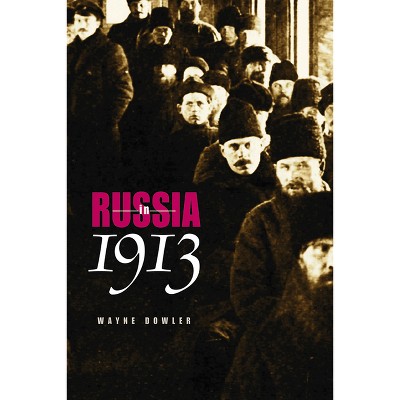Carpathians - (Niu Slavic, East European, and Eurasian Studies) by Patrice M Dabrowski (Hardcover)

About this item
Highlights
- In The Carpathians, Patrice M. Dabrowski narrates how three highland ranges of the mountain system found in present-day Poland, Slovakia, and Ukraine were discovered for a broader regional public.
- Author(s): Patrice M Dabrowski
- 288 Pages
- History, Russia & the Former Soviet Union
- Series Name: Niu Slavic, East European, and Eurasian Studies
Description
About the Book
"A study of how three discrete mountain ranges within the Carpathian Mountain system -- the Tatras, Eastern Carpathians, and Bieszczady Mountains, together with their indigenous highlanders (Gâorale, Hutsuls, Boikos, and Lemkos)--were discovered and turned into popular tourist destinations by Poles and Ukrainians in the nineteenth and twentieth centuries" --Book Synopsis
In The Carpathians, Patrice M. Dabrowski narrates how three highland ranges of the mountain system found in present-day Poland, Slovakia, and Ukraine were discovered for a broader regional public. This is a story of how the Tatras, Eastern Carpathians, and Bieszczady Mountains went from being terra incognita to becoming the popular tourist destinations they are today. It is a story of the encounter of Polish and Ukrainian lowlanders with the wild, sublime highlands and with the indigenous highlanders--Górale, Hutsuls, Boikos, and Lemkos--and how these peoples were incorporated into a national narrative as the territories were transformed into a native/national landscape.
The set of microhistories in this book occur from about 1860 to 1980, a time in which nations and states concerned themselves with the "frontier at the edge." Discoverers not only became enthralled with what were perceived as their own highlands but also availed themselves of the mountains as places to work out answers to the burning questions of the day. Each discovery led to a surge in mountain tourism and interest in the mountains and their indigenous highlanders.
Although these mountains, essentially a continuation of the Alps, are Central and Eastern Europe's most prominent physical feature, politically they are peripheral. The Carpathians is the first book to deal with the northern slopes in such a way, showing how these discoveries had a direct impact on the various nation-building, state-building, and modernization projects. Dabrowski's history incorporates a unique blend of environmental history, borderlands studies, and the history of tourism and leisure.
Review Quotes
Patrice M. Dabrowski has written an excellent book on a topic that has been long neglected. With the publication of The Carpathians, this major mountain range is finally beginning to catch up with the Alps and the Pyrenees as another kind of borderland that offers scholars a unique perspective on the development of modern national identities and everyday life.
-- "Slavic Review"Dabrowski is admirably open-minded and even-handed in explaining the perspectives of different actors and the visions of the highlands that they articulated. While engaging in ongoing, nuanced exploration of the relationship between the local and the national, she is attentive to those, such as the Jewish residents of the region, who could never quite speak on behalf of either local society or the nation but nonetheless played significant roles in the mutual constitution of both
-- "H-net Poland"The Carpathians is, in many ways, a pioneering effort, one that will hopefully put the Carpathians back on historians' mental maps and pave the way for further studies.
-- "History: Reviews of New Books"










